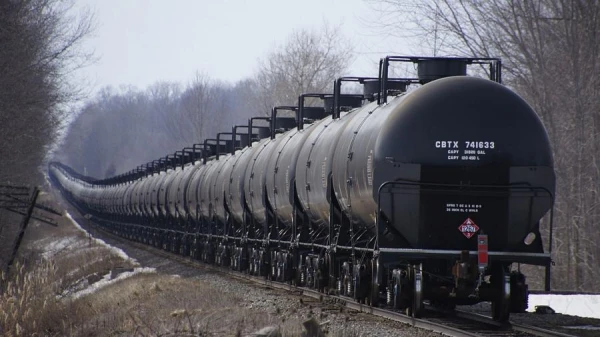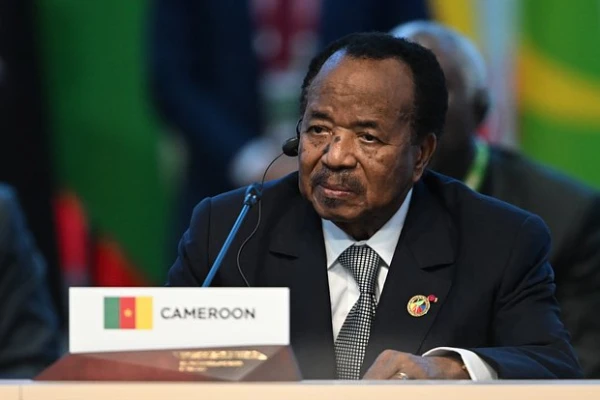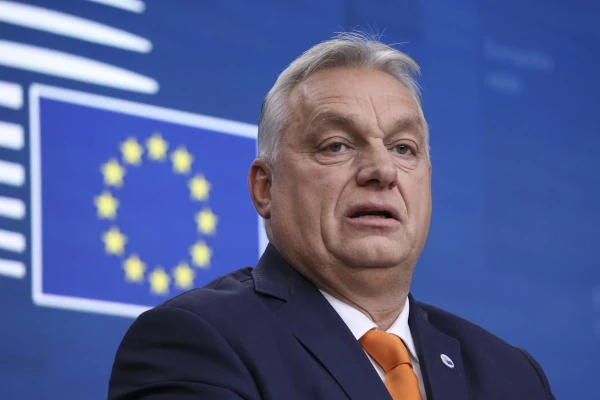
American intelligence helps Kyiv carry out long-range strikes on refineries and infrastructure deep within Russia. According to sources, the goal of the campaign is to weaken the Russian economy and force Vladimir Putin to negotiate.
For several months, the U.S. has been assisting Ukraine in carrying out long-range strikes on Russian energy facilities, the British newspaper Financial Times (FT) reported on Sunday, October 12, citing Ukrainian and American sources. According to the publication's sources, this is part of a coordinated campaign aimed at undermining the Russian economy and pressuring Russian President Vladimir Putin to negotiate.
U.S. intelligence allows Kyiv to plan attacks on key energy facilities in Russia, including oil refineries located far behind the front lines, the sources noted.
Previously unknown support from Washington has intensified since mid-summer and has become crucial for carrying out strikes that the previous Joe Biden administration did not approve. Ukraine's strikes have led to rising fuel prices in Russia, forcing Moscow to cut diesel exports and increase fuel imports.
Change in Trump's Position
The transfer of intelligence, according to the Financial Times, indicates that U.S. President Donald Trump, disillusioned with the Russian leader, has increased support for Ukraine. A turning point was a phone call in July between Trump and Ukrainian President Volodymyr Zelensky, during which Trump asked if Ukraine could strike Moscow if Washington provided it with long-range weaponry.
Two informed sources told the Financial Times that Trump expressed support for a strategy aimed at "making the Russians feel pain" and forcing the Kremlin to negotiate. The White House later stated that Trump "only asked a question, not called for new killings."
How the U.S. Helps Ukraine Plan Strikes American intelligence, according to sources, helps Ukraine determine routes, altitude, timing, and mission parameters, allowing drones to bypass Russian air defense systems.
Three sources familiar with the operation reported that Washington is involved in all stages of planning. One U.S. official clarified that Ukraine selects targets for strikes, while the U.S. provides information on their vulnerabilities. Other sources stated that Washington itself sets target priorities. One of them described Ukrainian drones as "a tool of the U.S. to undermine the Russian economy and pressure Putin."
Scale of Strikes on Russia's Energy Sector and Their Consequences
Active U.S. support became noticeable after Ukraine sharply increased the frequency of attacks on Russian oil and gas facilities in August and September. According to the research group Energy Aspects, the strikes damaged at least 16 of 38 Russian oil refineries, disrupting the processing of more than one million barrels per day.
Last week, the Security Service of Ukraine (SBU) announced that its elite unit "Alpha" struck the "Bashneft-UNPZ" oil refinery in Ufa, approximately 1,400 km from the Ukrainian border, using long-range drones. This was the third attack on energy facilities in Bashkortostan in a month.
The SBU told the Financial Times that "long-range strikes are aimed at destroying the enemy's military potential, including its economic capabilities," adding that Kyiv intends to "expand the scale and frequency of attacks within Russia."
Statements from Kyiv and Washington At a briefing in Kyiv on Wednesday, Zelensky declined to comment on the U.S. role in organizing strikes on targets deep within Russia. He only noted that Ukraine "works with American intelligence primarily for defense," referring to the air defense systems Patriot, NASAMS, and IRIS-T supplied by Western partners.
Zelensky emphasized that Ukraine's successes in carrying out long-range strikes are primarily related to the development of domestic technologies. "Our drones, drone missiles, and some rockets are getting better: they have more functions, and production volumes are increasing," he said.
The Ukrainian leader clarified that strikes on Russian territory are carried out by SBU forces and the drone systems unit of the Armed Forces of Ukraine (AFU), as well as other military and intelligence structures. Long-range drones Fire Point and "Lyuty" are involved in operations - sometimes up to 300 units in a single raid. Additionally, Ukrainian missiles "Neptune" and "Flamingo" are used.
Reaction from the White House and the Kremlin
A White House representative stated that "this war would never have started under Trump" and that the current administration "is trying to achieve its cessation." The Office of the Director of National Intelligence and the U.S. Department of Defense declined to comment. Kremlin spokesman Dmitry Peskov stated earlier in October that it is "obvious" that the U.S. and NATO regularly provide Ukraine with intelligence, including information necessary for strikes on Russian energy facilities.
Donald Trump has not yet made a decision on supplying Ukraine with long-range Tomahawk cruise missiles. He stated on Monday that he wants to "better understand how exactly they will be used." Zelensky confirmed that the option of Tomahawk is being considered. "This could strengthen Ukraine and sober up Russia," he said.
According to the Financial Times, shortly after the July conversation between Trump and Zelensky, U.S. intelligence began flowing to Kyiv with a new level of detail, allowing Ukraine to more accurately determine flight paths and the location of Russian air defense.













Leave a comment